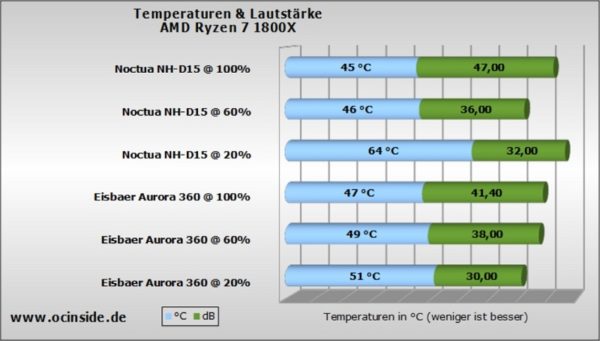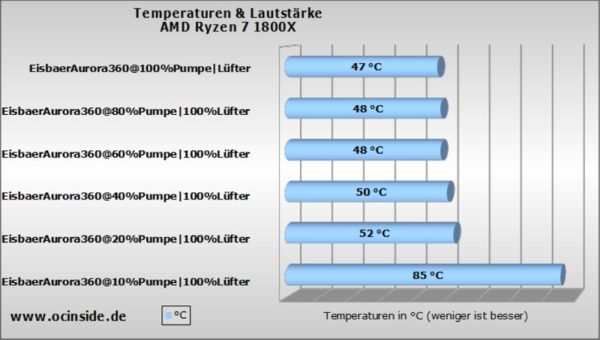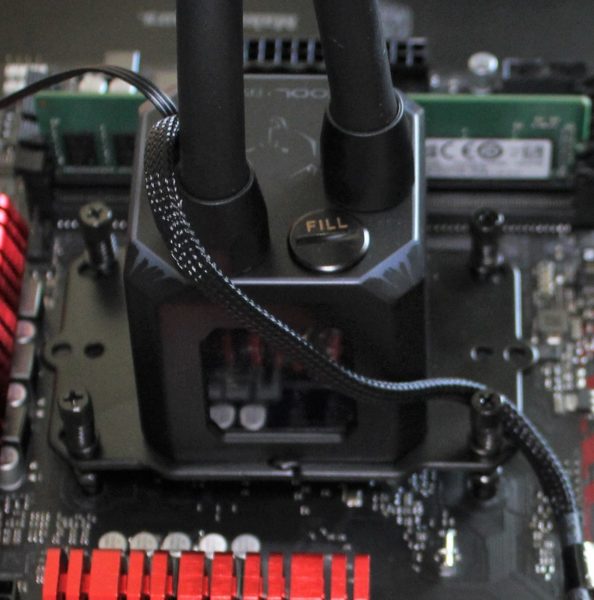
Test setup and results …
For the practical test, we mounted the Alphacool Eisbaer Aurora 360 water cooling on our AM4 test system, which consists of the following components:
ASRock Fatal1ty AB350 Gaming K4
AMD Ryzen 7 1800X
Crucial 4GB DDR4-2400
Cooler Master Testbench v1.0
For measurement, the following OC tools were used: Prime95 and SpeedFan.
The ambient temperature during the test was about 21°C.
As always, the Alphacool Eisbaer Aurora 360 competes against our reference, the Noctua NH-D15. If you want, you can also take a look at our recently published Deepcool Castle 240EX AIO review, which has been tested under the same conditions and compare the results.
We then used the CPU for 30 minutes with Prime95 and recorded the temperatures.
Noise-adjusted, the Eisbaer Aurora AIO clearly emerges as the winner. In the 100% range, however, maybe not quite as clear as you would have expected with a 360 AIO against a 2x140mm air cooler … here the Eisbaer does not seem to get the heat away as efficiently as the Noctua cooler. This is perhaps also due to the design, because after all, the pump, expansion tank AND CPU cooler are housed in a relatively compact case. In contrast, the Eisbaer Aurora can really boast with the 360mm radiator underneath and delivers the best values that we have been able to measure on this test system so far with only 20% fan speed.

Since the pump can also be easily controlled via the 3-pin connection, we also tested how the pump speed affects the cooling capacity and have the pump separately controlled at 100% fan speed.

The cooling capacity drops only moderately even at 40% pump speed, so that the pump can be controlled with a clear conscience in favor of quieter operation. You could even represent 20% if you wanted to. Below this, however, the flow drops so much that sufficient cooling is no longer guaranteed.
The fans are tuned quite quietly and are not particularly loud even at 100%, and the sound is also very pleasant over the entire speed range. This, combined with the lush 360mm radiator, can be used to build a really quiet system.
In order to be able to better assess the fans, we have a video as usual by regulating the speed range completely up and down again.
AIO water cooling often encounters a slight pump hum or pump whirring. However, the built-in DC-LT 2600 is beyond any doubt and you have to listen very carefully to notice the difference between 20% and 100%.


